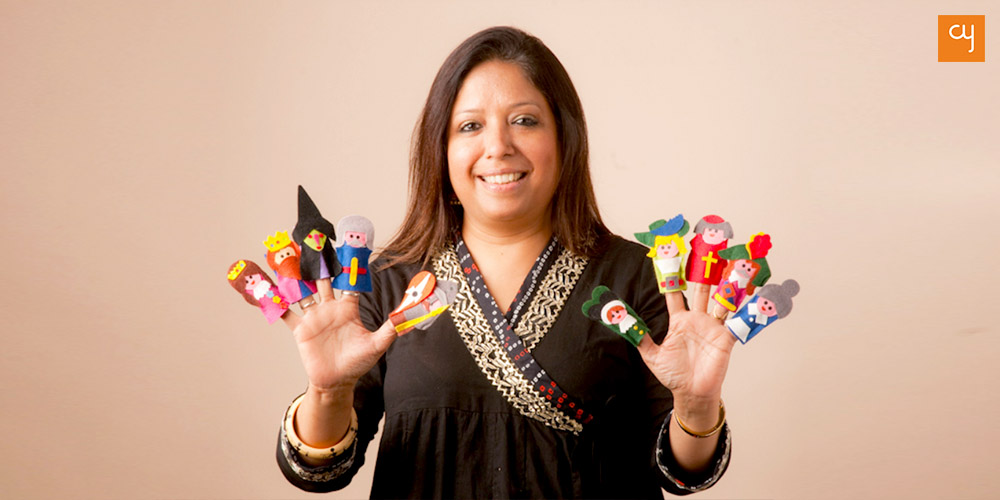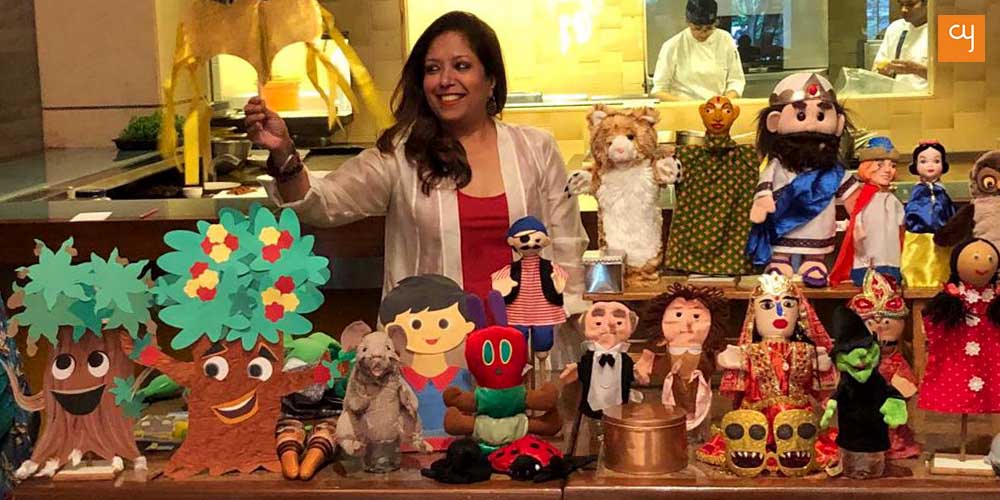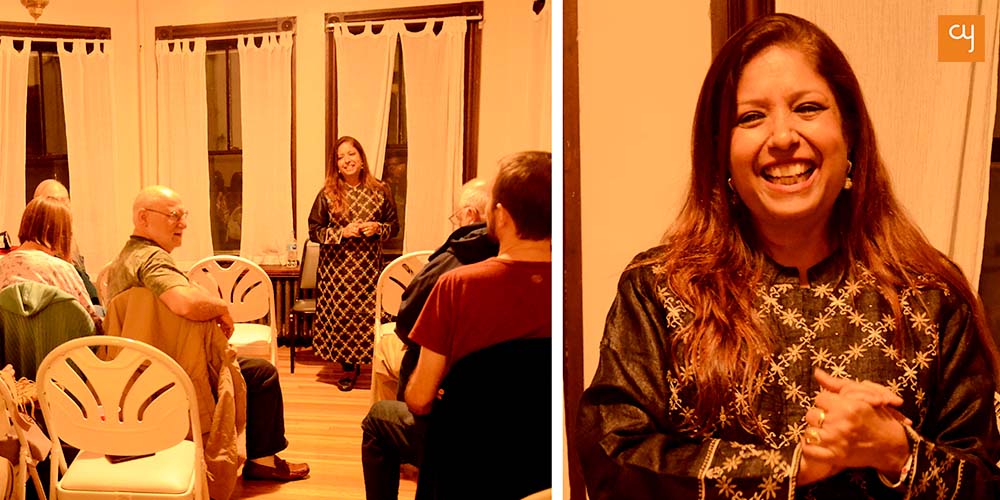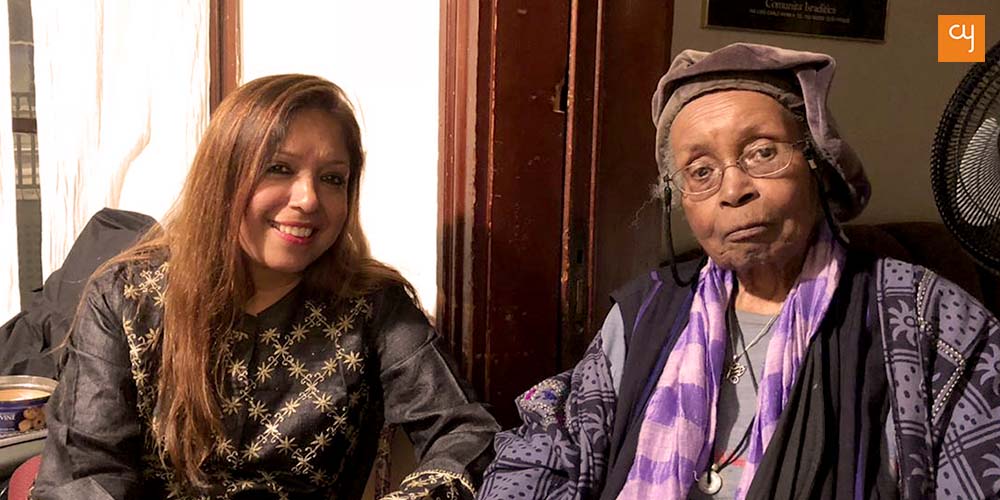Meet Usha Venkatraman, the puppeteer who believes that stories can change how we teach
For 23 years, Usha Venkatraman has been exploring the power of storytelling to impart values and teachings from history. She was in Somerville, USA, for a performance and spoke to us about how stories speak to her and her audiences.
Usha Venkatraman was always very unlike your usual school teacher. If she could, she’d start every class with a puppet show or at least a story to kick off the subject of the day. Why does the moon wane and wax? Well, because the moon has two wives of course – one who reads him poetry to the effect that he forgets to eat at all, and the other who cooks him handsome meals till he is bloated and full! If this doesn’t set up a child’s imagination for a dose of science, then perhaps little can. Usha believes in the power of stories to ignite a child’s curiosity. “I tell teachers, if you start your lesson with a simple story for 5 minutes, no one will ever forget biology, physics, chemistry or mathematics,” she says. From puppet shows held on the streets in India to storytelling sessions in international festivals in Sydney, Boston and Sweden, Usha has come far with her gift for storytelling in the course of 23 years.

It wouldn’t quite strike one as obvious to teach STEM subjects through stories. So what lent Usha this idea? Surprisingly, it’s her talent in music that did. A trained classical singer, Usha realised in her early days as a self-taught puppeteer that math and music have much in common. One of her first puppet shows was held at the Cathedral Infant School in Mumbai, where she taught children the notes of classical music alongside numbers. She taught odd and even numbers with odd and even notes, turning the children into performers, and the session into an immersive storytelling experience. In higher classes, Usha even taught permutations and combinations using raga. “A raga’s composition is actually a mix-up of the notes,” she says, “they are permutations and combinations.” Usha recently conducted a STEM worksop for 1000 children at Agastya International Foundation, an NGO based out of Bangalore that teaches science to rural children.
After a few such sessions, Usha realised that she could never again be “straightlaced into being a teacher” and quit her job as a kindergarten teacher. It gave her way too much joy to tell stories. “There was no looking back,” she says. Usha has, since then, performed in various schools in South Mumbai besides Cathedral and John Connon School. As someone who has studied Early Childhood Education, she says, “I strongly believe that the 6 language arts develop at infancy when you listen to stories.” But beyond this, Usha also believes in the power of stories to impart values and build the character of children. She says,
“Stories are a very non-invasive way of talking to people… I realised I can teach so many educational concepts – values. I do character education, I talk about bullying, about temper, about gender issues, about diversity appreciation – all through stories!
Usha has even made a children’s book to talk about animal rights, and plans to make more children’s books. She believes that even an everyday normal incident has much to teach us. “It’s just how you look at it,” she says, recounting the tale of Chanakya and his rice bowl strategy. As the story has it, the royal advisor once saw a mother feeding her child. The rice in the child’s bowl was hot so when he touched it, the mother scolded him. “Start eating from the sides where it’s cooler,” she told him. This gave Chanakya the idea for his famous political strategy to attack the enemy from the periphery and go towards the centre.

Though best known for her use of puppets in her stories, Usha sees herself more as a professional storyteller. The content is the main protagonist in her stories, rather than the puppets. She wants to stimulate her audience’s imagination with her words, and paint a picture in their minds. Usha draws her stories from Indian folktales and mythology as well as from multicultural world folktales from Cuba, Native American Indians, Africa, England and Japan. What’s incredible about the world of mythology is how so many stories share common themes and characters across world cultures. This seems to point at some mystical connection between images and archetypes across cultures. “The stories may be dressed up a little differently,” says Usha, “but the essence of the story is the same across places.”
“I choose stories that speak to me. They tell me, please tell my story.”
What can we learn from these ancient tales? “If you don’t know where you came from, how will you know where you have to go?” she asks. As a Norwegian saying goes, “It is the duty of the present to convey the voices of the past to the ears of the future.” Usha believes that the past already contains so many truths that science is now catching up to. To elaborate, she cites the story of Prahlad, whose mother chanted Lord Vishnu’s name frequently while he was in her womb. When he grew up and his father asked him who the greatest human being in the world is, Prahlad said that it was god who was greatest. Furious, his father punished him but Prahlad refused to change his stand. “Today we talk about the secret life of the unborn child, about how a fetus is already molded,” she says, “Science is now talking about it. But this was already there. It’s just confirming that the past has so much to teach us.”
But unfortunately, in India, not many people want to listen to Indian mythology. They prefer world folktales. But Usha finds her chance to tell Indian stories at international festivals and performances, where people are more than eager to hear traditional tales. On October 2, Usha was in Somerville in Massachusetts, USA, to give a performance at The Story Space, a storytelling group that has been grouping together every Tuesday since 26 years. Story Space was started by the husband-wife duo of Brother Blue and Ruth Hill and, back then, it was the only such weekly storytelling event in the world. Bruce Marcus, a storyteller who now curates the weekly gatherings, marveled, “I find that people from India tell a lot of traditional tales. In the US, with the slam movement, it’s becoming quite popular these days to share personal stories instead.”

Usha took to the stage as the evening’s Featured Performer. To mark the occasion of Gandhi Jayanti, she began with a beautiful story about compassion from Devdutt Pattnaik’s Hanuman’s Ramayan. From there, she whisked us off to a Diwali night in a village where a woman waged a lonely war against poverty. And from there, to a sassy little tale by AK Ramanujan about a woman who outsmarts her husband to carry out her lustful endeavours with a smitten king. Though a cheeky tale at first listen, Usha often performs the last story because it speaks to her about how women in the early 1900s were not as submissive as we imagine them to be; that they knew themselves. Holding the space with her focused awareness and flawless diction, Usha intermittently burst into song, smiling as she painted vivid pictures in our mind’s eye. Being a classical singer, Usha has a unique style of combining the folk form of puppetry with the classical form of music and the traditional art of oral narration; although, for that evening, she had left her suitcase of puppets behind.

That evening at Story Space, the stage was also shared by a man who claimed to be the world’s first ‘celibate dating coach’, as well as by a Feminine Spirituality Leader and a former security guard. It was graced by Elisa Pearmain, a storyteller and therapist who has been imparting character education in Boston’s public schools for years. So why do we tell stories? Bruce Marcus asked. “To go where I can’t go,” someone whispered. “To bring back our soul,” said another. And after Usha’s performance, we all raised our hands and inhaled deeply, parting the air in front of us as though a portal had been opened between this world and another.
Yatra Archives

 How Tulika Books is creating impact in children’s lives through picture books
Nandini Varma
How Tulika Books is creating impact in children’s lives through picture books
Nandini VarmaAug 21, 2019
A children’s book about a boy who feels like a girl. And about a child brought up by grandfathers. These are some of the stories published by Tulika Books, who have been making children’s picture books since 23 years. Little…
 Dalgona Coffee: A worldwide social media trend about home-made café experience
Harshil Shah
Dalgona Coffee: A worldwide social media trend about home-made café experience
Harshil ShahApr 2, 2020
While the lockdown has ignited various trends on social media, one that has received a major global following is #DalgonaCoffee. With thousands of posts on its name, here’s all you need to know about the Dalgona Coffee wave. I first…
 Leonardo, Michelangelo, Raphael and Donatello—Artists or Teenage Mutant Ninja Turtles characters?
Harshil Shah
Leonardo, Michelangelo, Raphael and Donatello—Artists or Teenage Mutant Ninja Turtles characters?
Harshil ShahNov 5, 2019
Did you ever wonder where the Teenage Mutant Ninja Turtles’ characters got their names from? Well, your search is complete. Here is a brief introduction of the artists from whom the creators of TMNT took inspiration. Teenage mutant ninja turtles,…
 The call of the mountains: orthopaedic Dr Yatin Desai’s advice on trekking
Himanshu Nainani
The call of the mountains: orthopaedic Dr Yatin Desai’s advice on trekking
Himanshu NainaniMay 24, 2019
In this piece 64 year old Dr Yatin Desai, shares with CY his inspiring story of how to scale towering mountains with utmost ease and how this life adventure activity can shape human character and health. Chances are high that…




